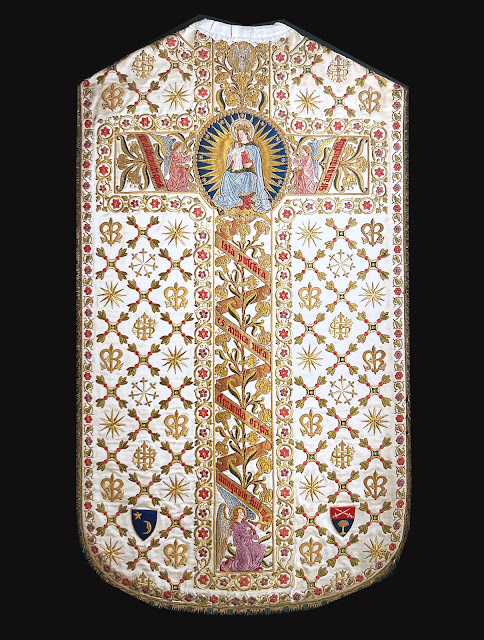Aside from Venice, Lucca and Florence, one of the other European cities that would become renowned for its textiles was the French city of Lyon, seat of the Primate of the Gallicans and home to one of the largest textile museums in the world, the Musée de Tissus. Lyon would begin its silk making enterprise in the second half of the 15th century under the patronage of King Louis XI as a way to try to acquire its own silks at a much less expensive cost and by the 16th century it became the arguable capital of the silk trade within Europe as a whole.
With this background in mind it should come as little surprise that France was one of the locations in the Church where exquisite vestments were produced, coming particularly into stride in the 19th and early 20th century.
Today I thought I would show you three chasubles manufactured in that period which include highly ornamental designs and, consonant with the medievalist interest that arose within the 19th century, each include a very strong use of figural and symbolic imagery.
 |
| Lyon, 1894. This chasuble formed a part of a complete Solemn Mass set. |












